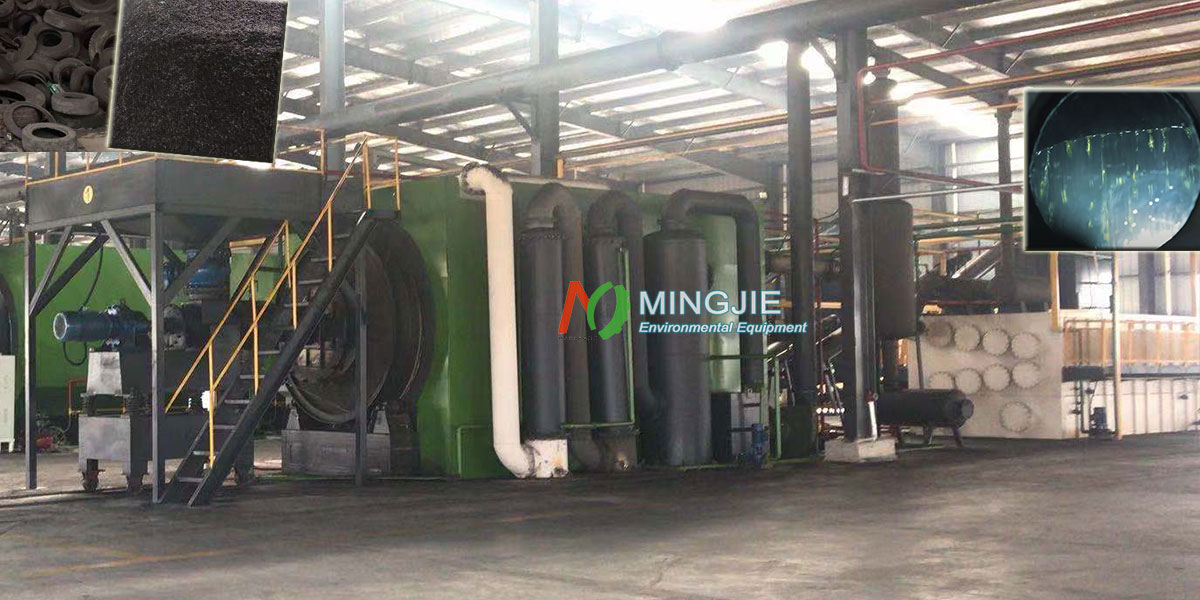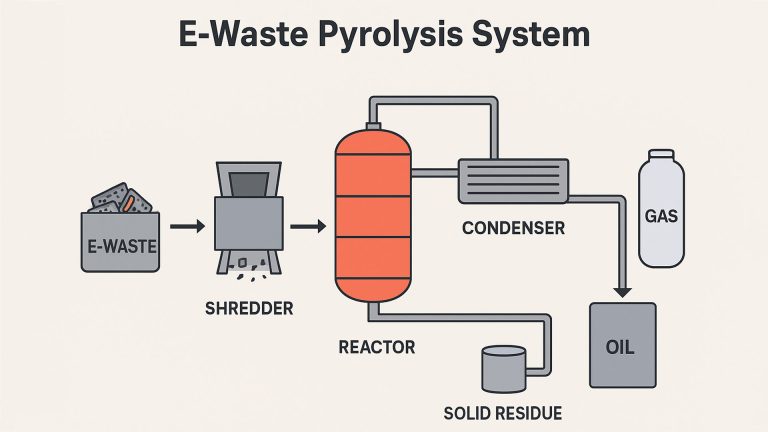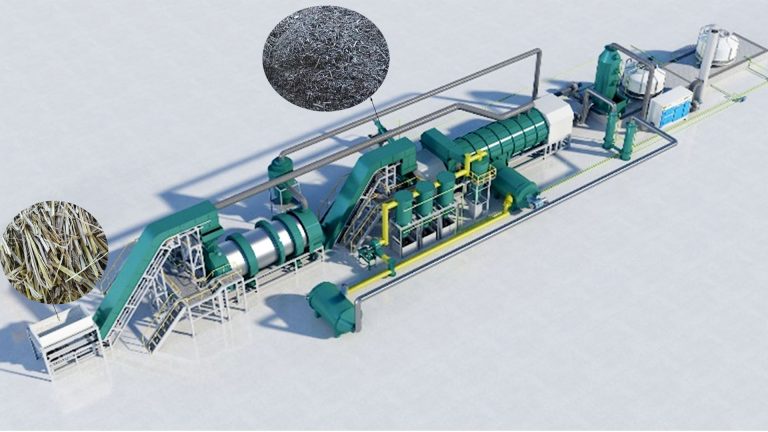Mingjie tyre pyrolysis to fuel plant can convert waste tyres into valuable energy sources, such as pyrolysis oil, carbon black, steel wire, and syngas. It primarily utilizes pyrolysis technology for thermochemical conversion. In a specialized, oxygen-free or low-oxygen environment, pyrolysis equipment uses indirect heating to cause the organic polymer compounds in tyres to undergo thermal cracking reactions.
Tires are primarily composed of rubber, a high-molecular polymer with a molecular structure rich in chemical bonds, such as carbon-carbon and carbon-hydrogen bonds.
When waste tyres are placed in tyre pyrolysis equipment, as the temperature gradually rises (400-800°C), these chemical bonds break down under the influence of thermal energy. The tightly connected macromolecular chains are disassembled and eventually reassembled into a variety of smaller molecules.

Causes of Tyre Pyrolysis to Fuel
The rubber component decomposes to produce energy-rich fuel oil. This is because during the tyre pyrolysis process, the long-chain rubber molecules are broken down into shorter-chain hydrocarbon compounds. These hydrocarbons, the main components of fuel oil, have a high calorific value and can be used as fuel.
At the same time, the original carbon black in the tyre and the new carbon black produced during the tyre pyrolysis to fuel process are retained. Carbon black has excellent reinforcing properties and wear resistance, making it an important filler in industries such as rubber and plastics.
In addition, tyre pyrolysis produces combustible gases, such as hydrogen, methane, and carbon monoxide. Synthesis gas has a high calorific value and, can be used as a supplementary energy source in the pyrolysis process to achieve energy recycling.
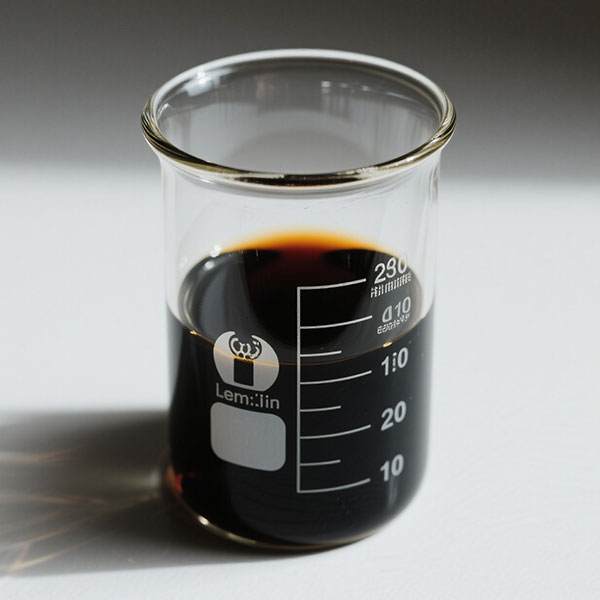


Choosing the Right Pyrolysis Equipment for Waste Tire Disposal
Pyrolysis Reactor
In tire to oil pyrolysis plant, the pyrolysis reactor serves as the primary equipment for tire pyrolysis. The pyrolysis reactor’s design, materials, and operation directly determine the efficiency, safety, product quality, and yield of the tire pyrolysis process.
In the field of waste tyre pyrolysis to fuel, numerous pyrolysis reactor types have flourished, each offering unique advantages. Common types of pyrolysis reactors include rotary kiln, fixed bed and fluidized bed.
Rotary pyrolysis reactors stand out for their unique dynamic pyrolysis method. Their core is a slowly rotating cylindrical furnace, typically rotating at a speed of 0.5-5 rpm. Rotary kiln pyrolysis furnaces offer the advantages of large processing capacity and strong adaptability. They can continuously and stably process scrap tires, and the residence time within the kiln is easily controlled.
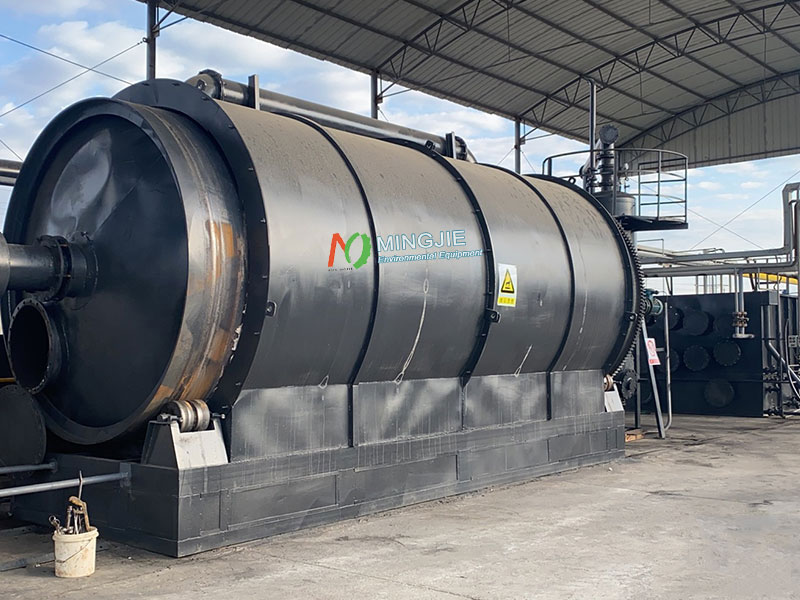
Fixed-bed pyrolysis furnaces have a simple structure and are easy to operate. They are suitable for small-scale tire processing projects with relatively small processing capacities. Fluidized-bed pyrolysis furnaces offer high heat and mass transfer efficiency and rapid pyrolysis. However, they place high demands on the equipment’s sealing and gas distribution system.
Exhaust Gas Treatment Equipment
The tyre pyrolysis to fuel process produces harmful substances, such as carbon monoxide, nitrogen oxides, sulfur oxides, VOCs, and polycyclic aromatic hydrocarbons. Therefore, efficient exhaust gas treatment equipment is essential.
Exhaust gas treatment typically utilizes a multi-stage purification process. First, exhaust gas is removed through equipment such as cyclones and bag filters. Then, activated carbon adsorption is used to absorb dioxins and some heavy metals. Exhaust gas containing acidic gases (such as HCl,SO2) requires neutralization through methods such as alkaline spraying.

In addition, to achieve standard emissions, catalytic combustion technology may be required to further remove harmful substances from the exhaust gas.
Supporting Equipment
In addition to the pyrolysis reactor and exhaust gas treatment equipment, the tyre pyrolysis to fuel plant also includes supporting equipment such as a feeder, discharger, heating system, and cooling system.
To enhance tyre pyrolysis to fuel system stability and reliability, an automated control system should be employed. This system can monitor and adjust key parameters, such as pyrolysis temperature, gas flow rate, and pressure in real time, enabling intelligent system operation.

